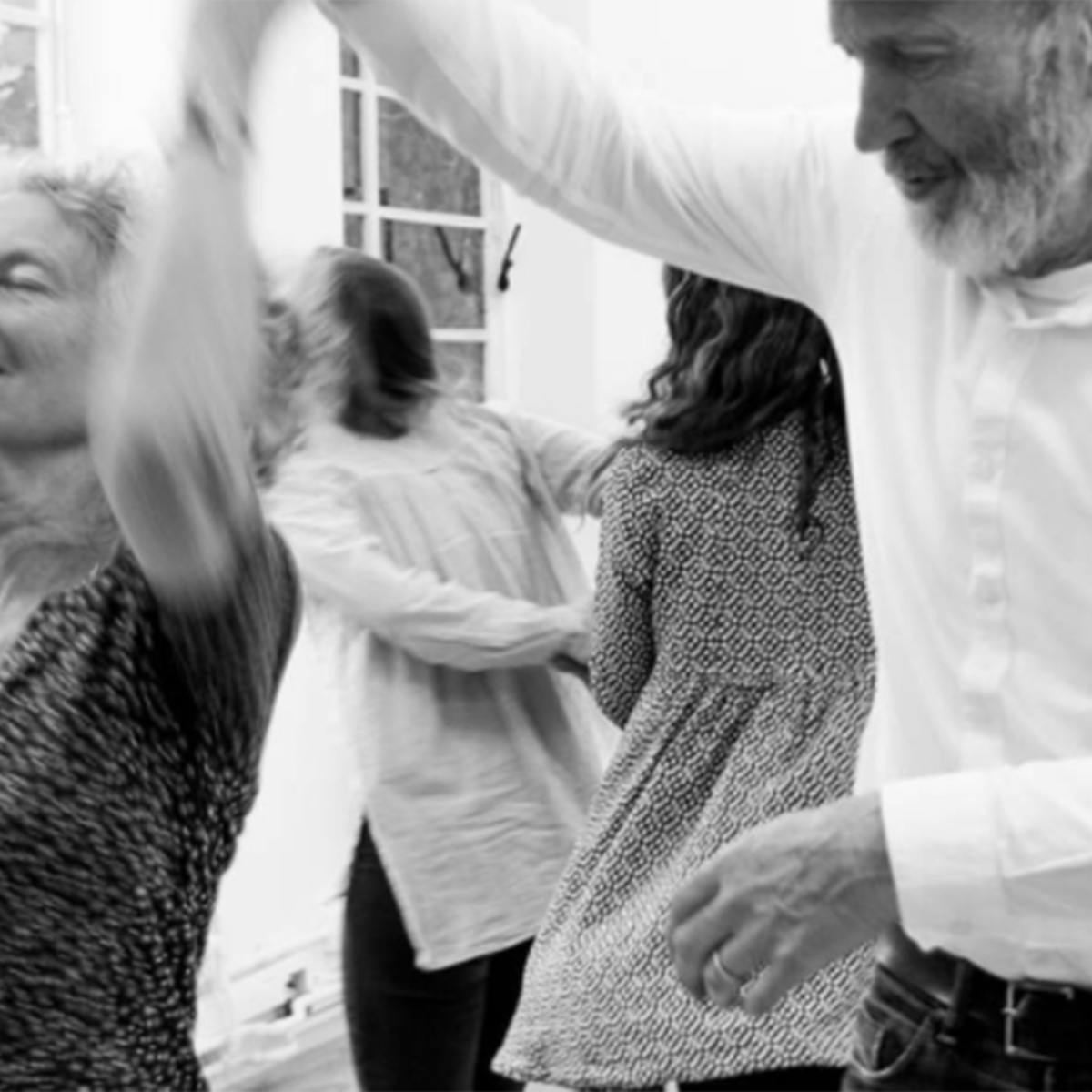Music can’t exist without memory. But, despite the fact that memory loss can be associated with dementia, people living with it are often still able to listen, sing along, perform or move to music. It offers a way to communicate beyond language, and to sustain creativity, as well as giving insights into how memories themselves are formed.
Let’s call her Joyce. In her mid-50s, a form of early dementia began to erode her ability to communicate verbally, until she could no longer match simple spoken words to corresponding pictures. Joyce talked in grammatical sentences but they lacked any obvious context or relevance. She couldn’t identify well-known faces. Neurodegeneration had robbed her of the ability to remember semantics: the meanings of words.
But Joyce listened to music for many hours a day, humming along to popular songs. And when she was asked to keep singing a popular melody, such as Auld Lang Syne or the pop songs of the 1960s and 1970s that she enjoyed, after hearing the first few bars, Joyce could often do it flawlessly.
Despite having so-called semantic dementia, Joyce’s memory for music seemed relatively unscathed. She remembered not just the melodies themselves but the basic ‘rules’ that govern them. Where she couldn’t continue a well-known tune exactly, she came up with a totally plausible alternative.
Joyce is representative of other people with forms of dementia – there are many types, although it's commonly associated only with Alzheimer’s – in being able to process music even after her language faculty had largely disappeared. This tells us something about how our memory for music is encoded in the brain: it is, at least to some extent, separate from our encoding of the semantic content of language. The implications of this preservation of musicality could also change how we think about living with, and caring for, people with dementia.
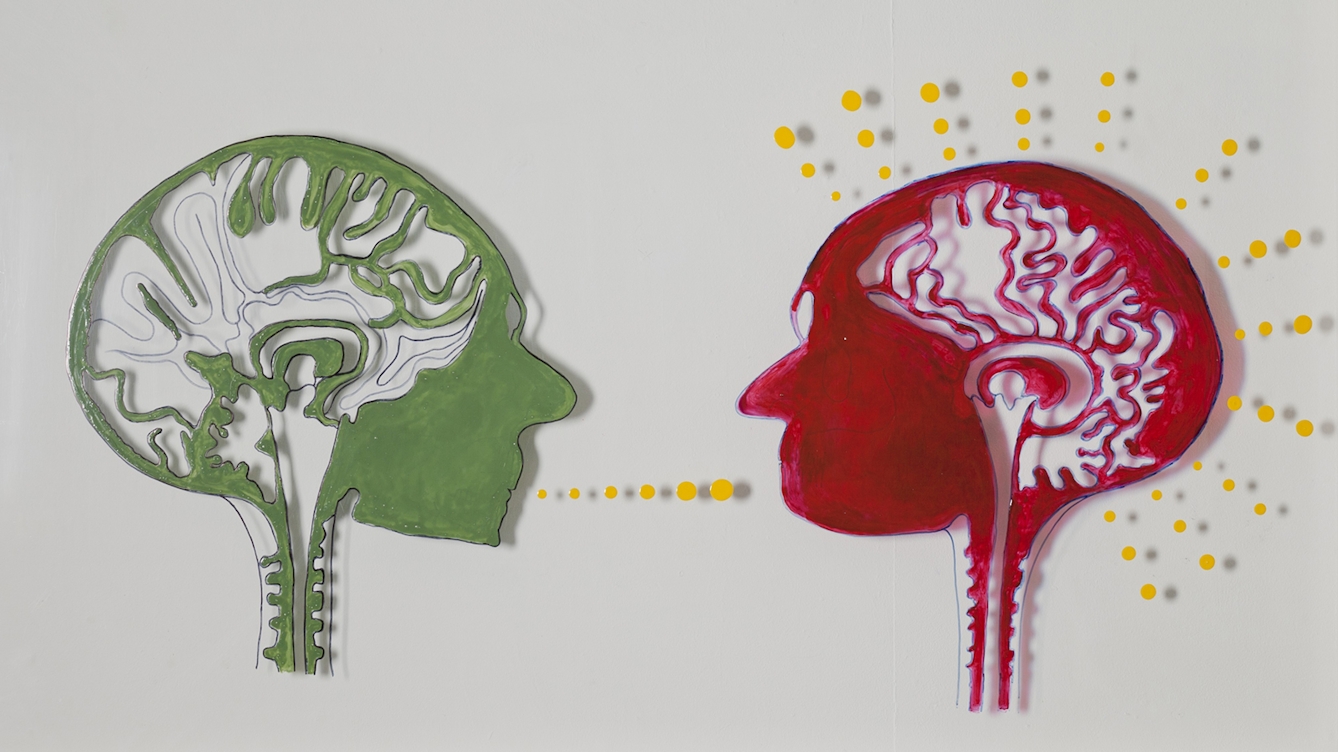
This artwork by Stephen Magrath describes some of the problems of understanding, recognition and communication that people living with Alzheimer's might experience. The red head represents the person living with Alzheimer's, and the green head represents their carer. The yellow bubbles symbolise speech and thoughts.
“Music is central to the notion of what it is to be human”, says Adam Ockleford, professor of music at Roehampton University. He regards music as a form of communication different from but no lesser than language. When people living with profound dementia engage with music, it reminds us that a loss of verbal capacity in no way diminishes their humanity, and that the possibility of communication – of genuine discourse – remains.
In popular consciousness, dementia is closely associated with memory loss. There’s good reason for this: many people living with dementia do lose the ability to remember words (or, sometimes, more specifically the link between their meaning and the associated sound), recent events, or the faces of loved ones. Yet the frequent survival of musical capacity – listening to, singing, performing or moving to music – indicates that some aspects of memory still function.
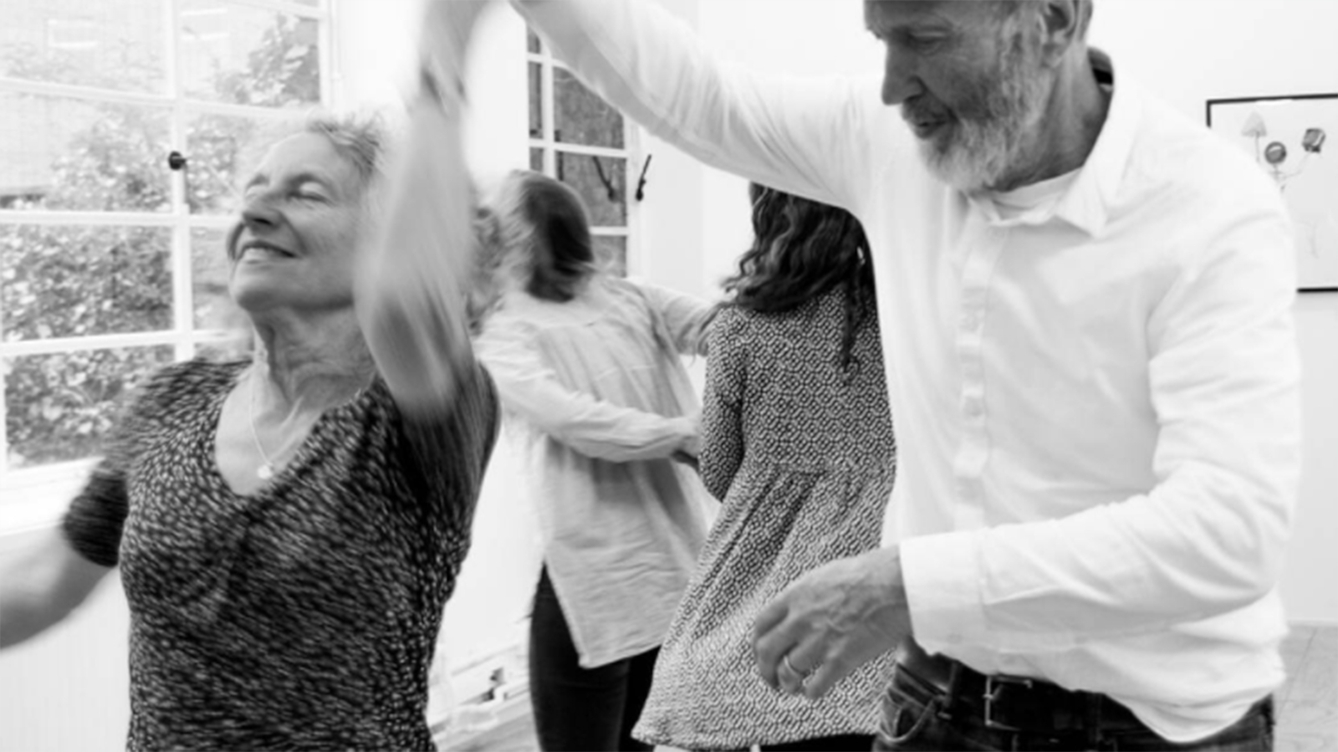
A beautiful snapshot of Roger, Erica and their daughters at Beatrice Allegranti Dance Theatre - Participatory Dementia Dances.
Music simply can’t exist without memory. It’s obvious, but often overlooked, that all music is constructed within us, from ingredients and formulas stored in our heads. Sure, the sounds need to be chosen and performed by musicians, and they are communicated to our ears as vibrations, usually in air. But they are still just sounds until our brains pick out notes, rhythms, timbres, patterns and structures. All this relies on memory.
A melody would just be a series of atomised notes unless we could relate each one to our recollection of what came before. And it would seem a meaningless meandering if it weren’t for our ability to remember long strings of notes, to perceive the repetition that dominates nearly all music, so that we distinguish verse and chorus, or hear recurring themes in the up-down contours of the sequence of tones. A great part of the delight to be found in J. S. Bach’s ‘Goldberg Variations’ comes from our recognition of a repeated melodic and harmonic pattern in so many ingenious mutations, and in particular from the return of the introductory aria after the variations have all played out.
Even non-musically-trained listeners implicitly learn the general structure of their culture’s music. Western listeners, for example, sense the key in a tune because they have acquired and assimilated some notion of the standard major and minor scales. In this and other respects, we develop a sense of ‘how music goes’, which is what enabled Joyce to fill gaps in her memory with viable inventions. We also have memories of musical styles and conventions – a tune with five beats to the bar might sound a little odd (unless you’re from the Balkans), even if you can’t say why. And Westerners tend to hear minor-key music as ‘sad’, although there is nothing innately so about the notes themselves.
On top of that, experiencing music is surrounded by a wealth of associations outside of the piece itself. We relate it to other musical memories: “Oh, this cover version isn’t as good as the original”, or “I don’t know this piece, but it sounds like Mozart”. Hearing our favourite songs might awaken memories of when we first heard them, and how we felt then. Memory can make music an emotional trigger: we feel yearning nostalgia, or joyfully (or painfully) recollect when our children played it on an endless loop. These memories are what embed music – that is, the experience of hearing it – into the wider culture.
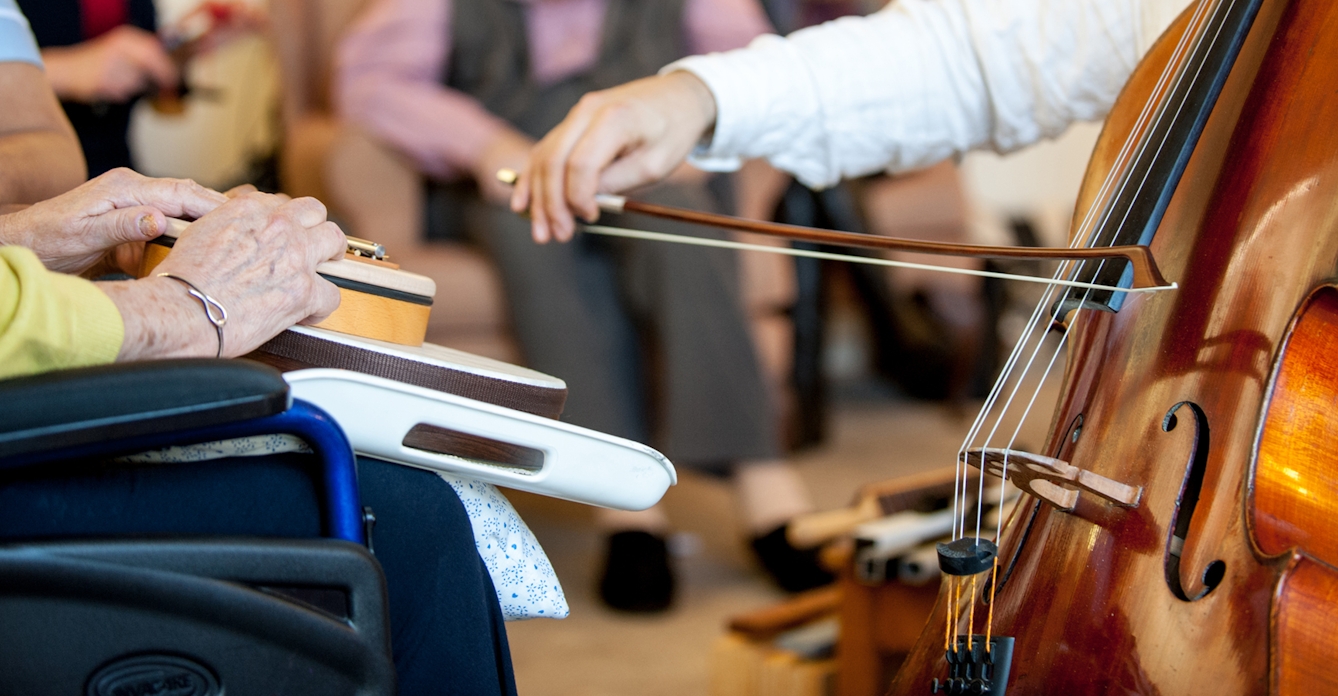
Wigmore Hall's Music for Life project sees professional musicians encourage people with dementia, and their carers, to engage in music-making as a means of communication.
“Powerful musical emotions can unlock associated non-musical memories, which may be one reason why the pop songs we hear as teenagers often remain so vivid and take us back so readily”, says neuroscientist Jason Warren of University College London.
It’s because of such associations that the preservation of musicality in people living with dementia offers a window on wider aspects of the individual. It’s estimated that there are around 850,000 people living with dementia in the UK (one in six over the age of 80), and there will probably be more than a million by 2025. Music is widely used in dementia care, ranging from individual listening with personalised playlists, to choirs and orchestras that include people living with dementia. Music for Life, a project run through Wigmore Hall in London, takes professional musicians into dementia care environments. The musicians encourage people with dementia, and their carers, to engage in music-making as a means of communication.
There’s little coordination, however, between the methods, aims and assessment of all these interventions. Some are purely therapeutic, for example using music instead of medication to reduce ‘challenging’ behaviour. There’s some evidence that encouraging people to engage with music in some way can improve impaired memory and speech fluency and content, and reduce depression.
A Commission on Dementia and Music has recently been set up by the International Longevity Centre UK to better understand the benefits and develop guidelines for best practice. Meanwhile, Created Out of Mind, a project based at Wellcome Hub, is seeking to expand and deepen the ways in which such creative expression in people with dementia can be acknowledged and understood. It wants to find a space for the arts that doesn’t just rely on framing it as a medical intervention.
One Created Out of Mind project - 'Music for Life 360' - builds on the existing programme at Wigmore Hall. It will use emerging technologies to examine the interaction between a musician, a carer and a person with dementia, in the present moment. This will enable the development of tools that can capture more accurate data. This in turn will complement current evidence for music-based activities in care settings, and help improve them.
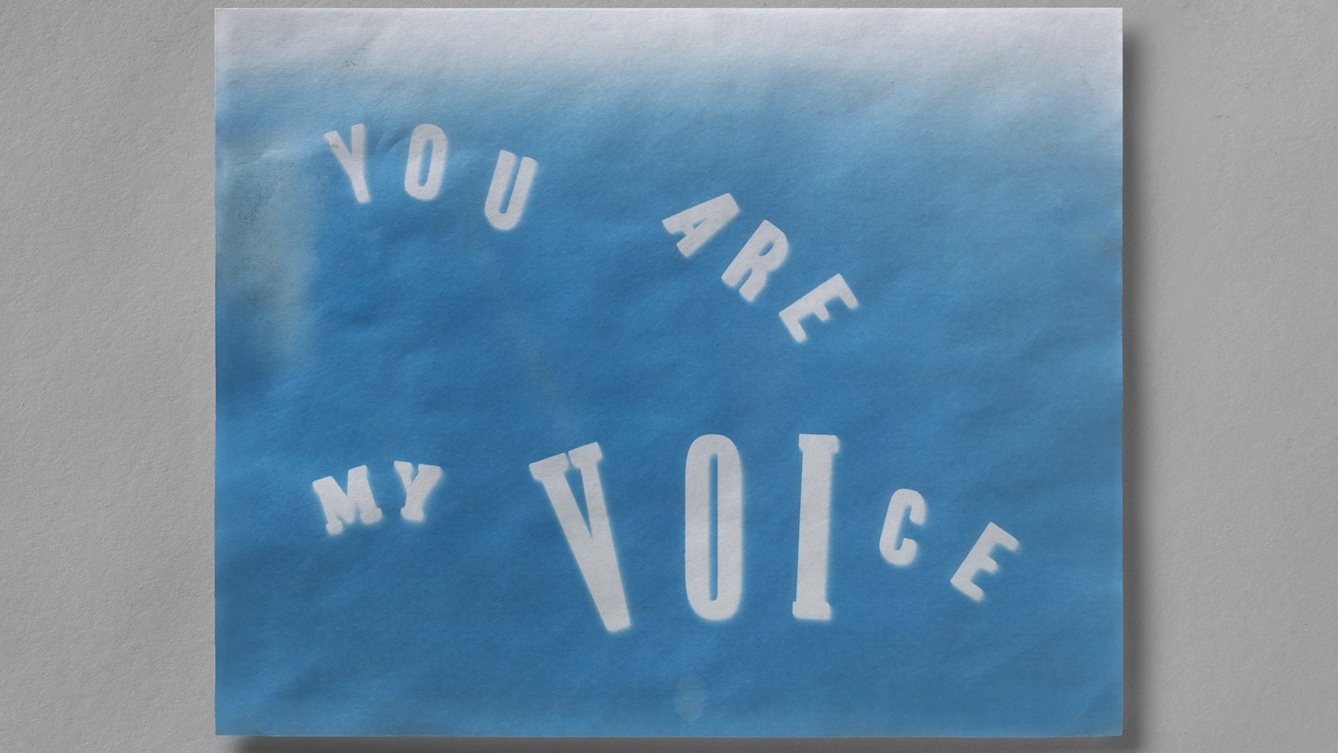
This artwork by Janet Horton represents the role she plays for her husband, who lives with dementia and finds self-expression difficult. It was created during a 'Words and Letters' print workshop led by Created Out of Mind and Pixel Press. Created Out of Mind aims to explore, challenge and shape perceptions and understanding of dementias through science and the creative arts.
Although seeing a memory for music survive in loved ones with dementia is a common experience – it was for me in my grandmother’s last years – we shouldn't imagine that it is universal, or always takes the same form. After all, the processing of music is distributed across the brain: different regions handle, say, primary auditory signaling, pitch discrimination, harmony, language-analogous syntax (such as ‘wrong notes’), and emotion. And, since different dementias involve atrophy of different parts of the brain, we might expect variations in how they affect music cognition.
Memories are generally classed in two main categories. Episodic memory is the recall of certain events or facts personal to us, such as what we had for breakfast. Semantic memory, meanwhile, involves shared ‘facts about the world’ – the meanings of words, say, or knowing the capital of France. Both types of memory may persist for a long time: we might, for instance, retain an episodic memory of our first day at school. Both types are also involved in processing music: we know that this song was written by Duke Ellington (semantic), but also that we first heard it played by Stan Tracey at Ronnie Scott’s (episodic). There is also a third category: procedural memory, which is remembering how to do something, like play the saxophone.
Each of these memory types can be hit or preserved selectively, and so the effects can be quite specific to different forms of dementia. Some people might be able to recall how a tune goes but not what it is called. Alzheimer’s, for example, generally does more damage to episodic than to semantic or procedural memory. One study compared brain scans of people with Alzheimer’s with young healthy subjects as they recalled familiar songs. The results showed that the activity of parts of the cortex linked to that long-term memory was relatively unaffected by the disease.
Other conditions can disrupt our emotional connection to music. People with dementias due to frontotemporal lobar degeneration (FTLD) often find it hard to identify the emotion expressed in others’ faces or voices – happiness, sadness, fear or anger – and they seem to share a difficulty in reading those qualities into music that most unimpaired listeners would identify. On the other hand, some types of FTLD can enhance the emotional impact of music, creating an abnormal craving for it that is dubbed ‘musicophilia’. This might be because, while a person’s ability to process the strictly musical structures is relatively intact, FTLD degrades their capacity to place this in an appropriate social context: they can’t so easily infer the social signals they get from others. That, after all, is a common attribute of obsessive behaviour.
Memory and musicality are complicated things on their own, let alone in relation. It’s straightforward enough to argue that without some kinds of memory there would be no music, but one might go further and argue that memory makes music as biologically and culturally inevitable as language. Memory is, at the most basic level, an evolutionary necessity, because it is what lets us exist effectively within our environment and take advantage of it, allowing organisms to use past experience to ready themselves for the future. Even bacteria, at some level, do that. Memory is what lets us, as humans, see patterns and regularities, and in that way anticipate what will come next. Music plays with this pattern-seeking instinct, this human delight in solving puzzles. But it is, and must be, a shared enterprise: a product of the group and the culture. Then it becomes a receptacle for communal memory and experience. For people like Joyce, it may supply a non-verbal means of maintaining a connection to the past and present of ourselves, our friends and family, and our society.
Why Music? The Key to Memory, a partnership between Wellcome Collection and BBC Radio 3, takes places from 13-15 October 2017.
Created Out of Mind is a team aiming to explore, challenge and shape perceptions and understanding of dementias through science and the creative arts. They are based in The Hub at Wellcome Collection. During Why Music? The Key to Memory, researchers from the project will reveal initial findings, and several new musical pieces inspired by their work will be premiered by young composers from the BBC Proms Inspire scheme, and Fellows from the National Youth Choirs of Great Britain.
About the author
Philip Ball
Phil is a science writer and author, and a member of the Created Out of Mind core group.
